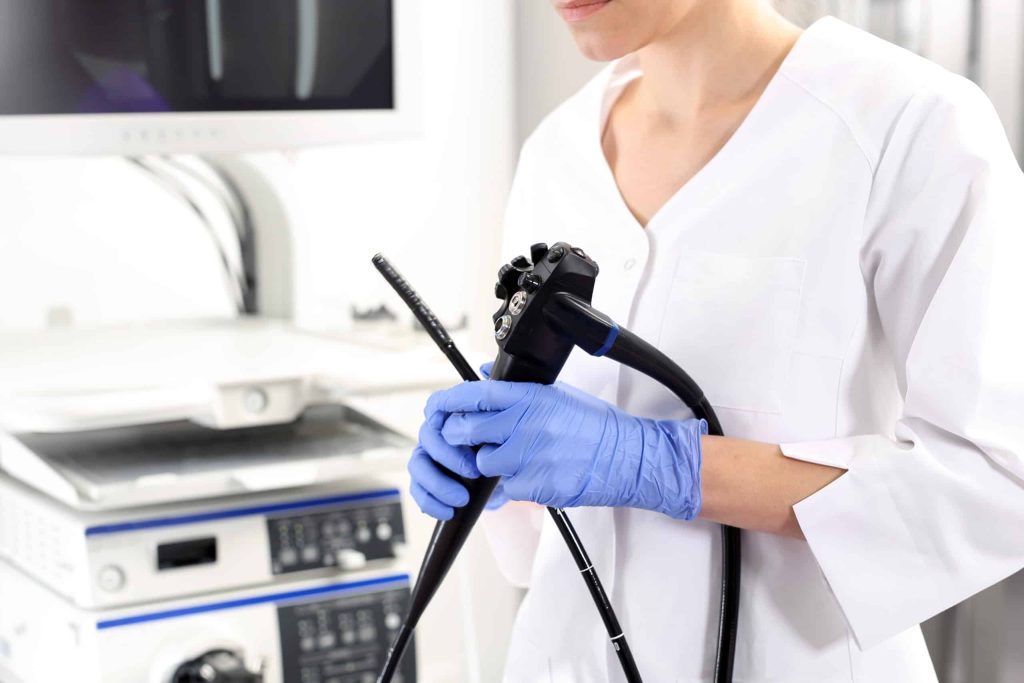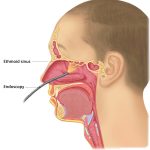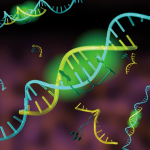
In this test the doctor uses a long, flexible telescope through your nose. This is to make a video of the inside of your:
- nose
- throat
- voice box (larynx)
- upper part of the food pipe (oesophagus)
The test is called a transnasal oesophagoscopy.
Why do you have a transnasal oesophagoscopy?
This test helps your doctor to view your voice box (larynx) and food pipe (oesophagus).
You might have it instead of having an endoscopy. This might happen if you aren’t well enough to have a general anaesthetic. Endoscopy instruments are bigger. You usually need a general anaesthetic for an endoscopy.
How to prepare for a transnasal oesophagoscopy
Tell your doctor if you’re taking blood thinning medicine to prevent blood clots. Your doctor will ask you to stop these tablets a few days before the test.
Your doctor will also tell you if you need to stop taking any other medicines.
You can’t eat for 4 hours before the test. Talk to your doctor if not eating could be a problem for you. For example, if you have diabetes.
Your doctor will explain what they are going to do. You will also sign a consent form. This is a good time to ask any questions you might have.
How do you have a transnasal oesophagoscopy?
You have this test at a hospital as an outpatient. The test takes about 30 minutes.
Your doctor uses an anaesthetic spray to numb your throat. It takes a few minutes for the area to go numb.
The doctor passes a long, flexible telescope up your nose. It can feel uncomfortable but shouldn’t be painful.
The tip of the telescope has a video system and a light. This gives your doctor clear pictures of the inside of the throat, voice box and upper part of the food pipe. They check for any growths or abnormal areas.
The doctor might also pass a small amount of air or water into your food pipe through the flexible tube. This may make you belch which is normal.
You will be able to breathe, swallow and cough normally during the test.
If you need a biopsy
Your doctor may need to take a small sample of tissue (biopsy) during the test. They can do it at the same time as the test. Some people might need a biopsy under general anaesthesia. You will be admitted to hospital if you need that.

What happens after a transnasal oesophagoscopy?
You can usually go home after the test. You will be able to drive or operate machinery afterwards.
Your throat and nose will stay numb for a while after the test. This might interfere with swallowing food and liquid normally. You should not eat or drink for two hours after the test. You might also feel bloated, pass wind or belch for a while after the test. This is normal and will pass after an hour or two.
You might have mild discomfort in your throat or nose for a few hours. You can take a painkiller such as paracetamol. Do not take aspirin or anti inflammatory medication for 72 hours. This can increase the chance of bleeding.
You can start taking your blood thinning medication as suggested by your GP or anticoagulant clinic.
Contact your doctor immediately or visit Accident and Emergency if you:
- have breathing problems such as shortness of breath
- are spitting up bright red blood
- have a temperature over 38 degrees
- have chest pain
Getting your results
The doctor will record the test and then replay the recording slowly. They will explain to you the findings of the test.



